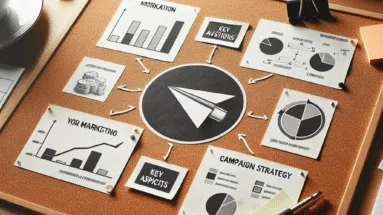
What You Should Do to Fix Problems in Your Online Marketing
Identify Your Target Audience Understand Who They Are When I first jumped into online marketing, I remember feeling like I was throwing spaghetti at

Identify Your Target Audience Understand Who They Are When I first jumped into online marketing, I remember feeling like I was throwing spaghetti at

Understand Your Audience Research Your Target Market When I first started diving into online marketing, one of my biggest lightbulb moments was realizing how crucial it is to know who you’re talking

Lack of Clear Goals Understanding Your Objectives One of the first mistakes many make in online marketing is not setting clear goals. I've been there, setting out to “make money online” without

Understanding Your Audience Defining Your Target Market Alright, first things first! You gotta know who you’re talking to. Defining your target market is like choosing the right tools for a DIY project

Understanding Your Target Audience Why Audience Research is Essential Let me start off by saying that identifying your audience is like finding the right

What Are Your Goals for This Campaign? Identifying Clear Objectives When I kick off any online marketing campaign, the first thing I do is nail down the goals. What am I really

Understanding the Basics of Online Marketing What is Online Marketing? Alright, let’s start at the very beginning. Online marketing, also known as digital marketing, encompasses all the ways we can promote products

1. Understanding Your Target Audience

Quality Over Quantity Understanding Engagement

Engage with Authenticity Be Real and Relatable When I first started building my online presence, one thing became crystal clear: authenticity reigns supreme. People

Define Your Brand Voice Understanding Your Audience One of the first things I had to do when I decided to ramp up my online

1. Know Your Audience Deeply Understanding Their Needs and Pain Points When I first started my online journey, I made

1. Authentic Engagement Matters Building a Genuine Connection When I first started growing my online audience, I always thought that numbers were everything. Boy, was I wrong! The moment I began focusing

Enhance Your Social Media Engagement Choose the Right Platforms When it comes to social media, I always say it’s not about being on every platform, but about being on the right ones.

Understanding Your Audience The Basics of Audience Analytics Let me tell you, understanding your audience isn't just a nice-to-have; it’s essential. When I first

Enhanced Creativity in Campaigns Breaking Away from

The Shift to Mobile-First Strategies Understanding Mobile Consumption From my experience in the marketing world, one thing stands out: everyone is glued to their